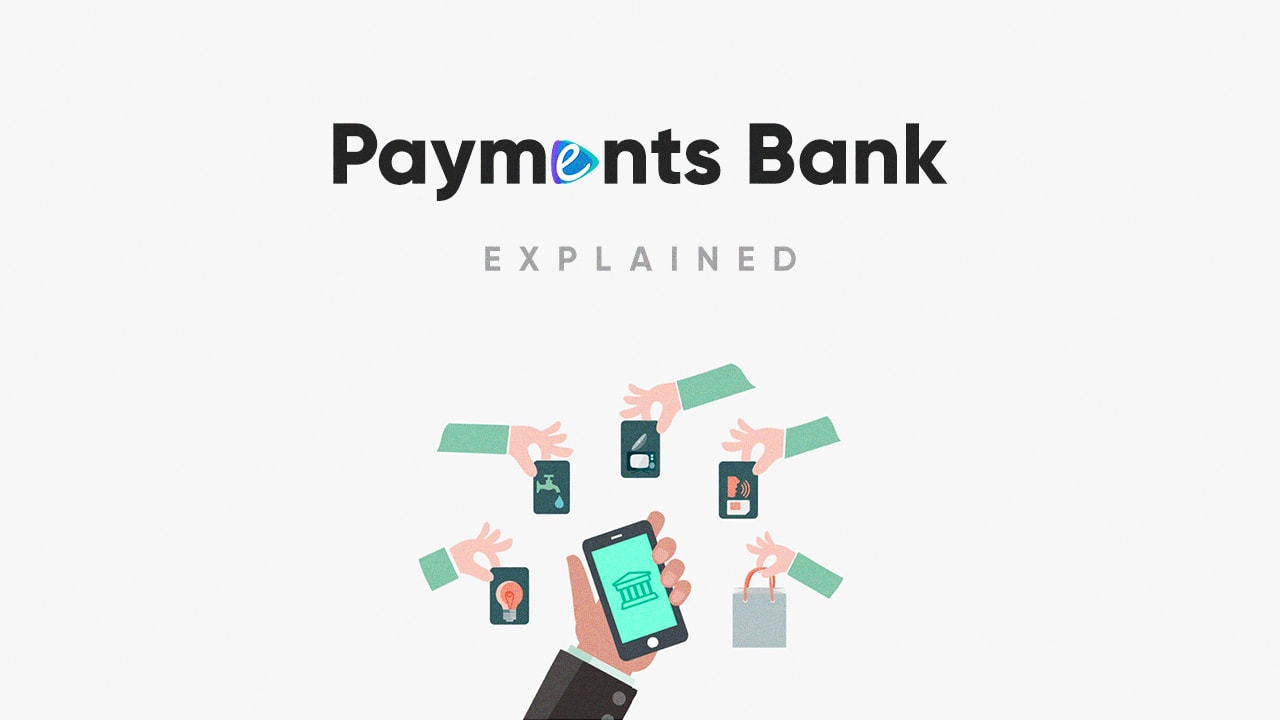Whenever we come across the word ‘bank’, we recognize it as some financial institution licensed to accept deposits and lend loans to its customers, which is what banks are. But as a part of making India a cashless and digital economy, the RBI has conceptualized a new model of payment system known as Payments Bank.

Table of Contents
What is a Payments Bank?
Payments Bank is a new model of banks conceptualized by the RBI, with the primary motive of promoting a digital, paperless & cashless form of banking. Under this initiative, non-banking financial corporations are given permission to offer basic banking services to every citizen without the hassles of the traditional banking system. Targeted towards the unbanked and the underbanked, payments banks aim to provide a bank account to every Indian citizen through the internet, hence bringing them under the formal financial system. Put simply; payments banks are regular banks operating on a smaller scale without the ability to lend. Payments banks fall somewhere between traditional banks and e-Wallets if we talk about features.
How Did Payments Banks Start?
The Committee on Comprehensive Financial Services for Small Businesses and Low-Income Households, which was headed by Nachiket Mor and formed by the RBI, submitted its final report along with various recommendations to the RBI in 2014. The objective of the committee was to propose measures for achieving financial inclusion and increased access to financial services. One of the key suggestions of the committee was to introduce ‘payment banks’ as a specialized bank to cater to lower-income groups and businesses so that by January 2016, each Indian citizen could have a global bank account.
In August 2015, the RBI released a list of 41 entities, out of which only 11 entities were provided with an in-principle license to launch their payment system by the RBI, which was valid for 18 months. The 11 entities were shortlisted after the evaluation of their license application which was done by the External Advisory Committee (EAC) headed by Nachiket Mor. The first organization to be given a license for payments banks was Bharti Airtel, followed by India Post & Paytm.
Payments Banks vs Traditional Banks – The Differences
Payments banks aim to enhance financial inclusion, especially through toned-down savings accounts and payment services. Accordingly, there are some restrictions on the payment system in order to make it an easier & safer option for customers. Both of them are basically banks, but the following are the key points that set payments banks apart from traditional commercial banks:
1. Restrictions on lending
One of the major differences between both banks is that payment banks are restricted from lending money, while commercial banks in India can lend money to their customers. This also adds to its security as most of the commercial bank’s loans are turning into Non-Performing Asset (NPA).
2. Maximum deposits up to ₹ 1 lakh
As per the RBI guidelines, payment banks can accept demand deposits up to ₹1 lakh, both savings and current. Meanwhile, to overcome this restriction, payment banks have entered into tie-ups with the mainline banks so that deposits over ₹1 lakh can be converted into fixed deposits.
Also, the Department of Postal (DOP) ensures that the deposit of a customer exceeding the amount remains in the postal system through a sweep-out mechanism where the excess amount will be channelized or routed to their Post Office Savings Bank (POSB) account automatically.
3. Payment banks cannot issue credit cards
As per the RBI guidelines, payment banks cannot issue credit cards, which is also considered an unsecured form of personal loan. However, they can issue virtual and physical debit & ATM cards. In contrast, regular commercial banks can issue both credit cards as well as debit cards.
4. Minimum capital requirements
This is more of a technical and behind-the-scenes difference. The minimum paid-up equity capital for payments banks shall be ₹ 100 crores. The stake of the promoters in five years should remain at least 40% of the capped amount. While the capital requirement for commercial banks is huge and is based on the Basel 3 guidelines, which are based on Basel 3 pillars. Basically, for the organizations that run payments banks, it is a lot easier to operate them.
Benefits Of Payments Banks
All the differences aside, payments banks do have some edge over traditional banks in some areas. Let’s find out the pros of payments banks and why you should use them.
1. Easy to open and operate
The process of opening an account in payment banks is way swifter than in commercial banks because of its digital platform. So no need to stand in queue and have a long conversation at the bank’s counter; rather, the credentials can be uploaded to your payment bank’s application, and the account is up and running in minutes.
2. No minimum balance requirements
With commercial banks, at the end of the month, we are left with the minimum balance in our accounts and we have to maintain it; failure to do so can cost us a penalty. But in payment banks, there is no minimum balance as such. One can open an account without paying any money upfront.
3. Higher interest rates & better offers
Payment banks provide relatively higher interest rates as compared to the rates offered by commercial banks, in addition to more and better offers, to lure more people into using payments banks.
List of some active Payment Banks in India
Following are some payments banks currently operational in India:
- Airtel Payments Bank (Bharti Airtel Ltd)
- Jio Payments Bank (RIL)
- Paytm Payments Bank (Paytm)
In case you’re curious, you can also check the list of all Payments Banks in India.

